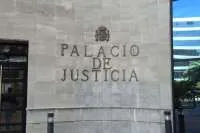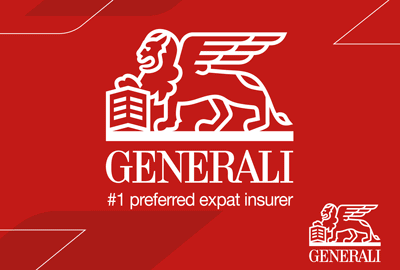Taking Control of Your Future: The essentials of Self-Managed Super Funds
- 20-10-2025
- Business
- Canarian Weekly
- Photo Credit: Pexels
Self-Managed Super Funds (SMSFs) have emerged as a powerful tool for individuals seeking greater control over their retirement savings. Unlike traditional superannuation funds that are managed by financial institutions, SMSFs allow individuals to take charge of their investment strategies while enjoying tax benefits.
With the proper understanding and management, SMSFs can offer an effective pathway to reaching long-term financial goals. This article will delve into the various components necessary for successfully managing your SMSF and how you can maximise its potential to secure a comfortable retirement.
What are Self-Managed Super Funds?
At its core, a self-managed super fund is a type of superannuation fund that you set up and manage yourself. Unlike industry or retail super funds, which pool members' assets, SMSFs provide direct control over investment decisions. Members can be trustees of the fund, meaning they are responsible for compliance, reporting, and investment choices. According to statistics from the Australian Tax Office, over 600,000 SMSFs are operating in Australia, which highlights their growing popularity among those looking to customise their retirement savings.
One of the main advantages of SMSFs is that they offer flexibility in investment options. Members can invest in various assets, including residential and commercial properties, shares, and managed funds. This flexibility allows individuals to tailor their investment strategies according to personal preferences and risk tolerance. With this flexibility comes increased responsibility. SMSF trustees are legally obligated to comply with regulations set forth by the Australian Taxation Office (ATO).
Key Benefits of SMSFs
Choosing to manage your super fund can unlock numerous advantages. Tax efficiency is among the most compelling benefits. SMSFs are typically taxed at a concessional rate of 15% on income, which can be lower than personal income tax rates. When funds are in the retirement phase, the earnings are tax-free. Utilising an SMSF can lead to significant tax savings for high-income earners.
Another crucial benefit is increased control. With SMSFs, you can tailor your investment strategy, enabling decisions that align with your financial goals and ethical considerations. If sustainable investing is important to you, managing your super fund allows you to invest in environmentally friendly companies or projects. SMSFs facilitate estate planning opportunities that can provide significant benefits to your beneficiaries.
Compliance and Regulatory Requirements
SMSF trustees must be keenly aware of the compliance obligations associated with managing a super fund. Among the key responsibilities is ensuring that the fund meets the Sole Purpose Test, which means the fund must solely provide retirement and benefits to its members. SMSFs are required to keep accurate financial records, hold regular audits, and ensure compliance with the ATO regulations. Failure to adhere to these obligations can result in hefty penalties, including the loss of tax concessions.
In light of these responsibilities, it's often advisable to seek Specialist SMSF Accounting Solutions to navigate the complexities involved. As explained by experts from SMSF Australia, engaging professionals who specialise in SMSF management can help ensure compliance and optimise the fund’s investment strategies. Understanding your obligations is crucial. The ATO can impose fines or penalties if a fund falls out of compliance.
Investment Strategies for SMSFs
Self-managed super funds offer a unique platform for implementing diversified investment strategies. The key to successful investing in an SMSF is understanding the different asset classes available. Many SMSF members choose to invest in direct property or real estate, as it provides a tangible asset and requires careful consideration of property market dynamics and associated risks. Alternatively, investing in shares or exchange-traded funds (ETFs) can offer liquidity and the potential for capital growth.
Asset allocation is another critical aspect of investment strategy. Effective diversification can reduce risk and enhance returns. Including a mixture of asset classes, such as equities, bonds, and real estate, can balance out the performance, protecting the fund from volatility in any single segment of the market. It is vital to frequently review your investment strategy and adjust it as necessary based on market trends and personal financial objectives.
Setting Up Your SMSF
Setting up a self-managed super fund involves several steps. Initially, individuals must decide on the fund structure, which can accommodate up to four members. Next, it is important to establish a trust deed, which acts as the governing document. This deed outlines how the fund will be managed and details the rights and responsibilities of the trustees and members.
After the trust deed is in place, obtaining an Australian Business Number (ABN) and a Tax File Number (TFN) for the fund is necessary. It is crucial to open a bank account specifically for the SMSF to separate fund assets from personal finances. Once these steps are complete, the fund can start accepting contributions, and members can begin to implement their chosen investment strategies.

Common Pitfalls and How to Avoid Them
Managing an SMSF can be both rewarding and challenging. One of the most common pitfalls is failing to keep accurate records. Trustees must maintain proper documentation of contributions, investments, and expenses. Neglecting this aspect can lead to compliance issues and complications during audits. Regularly updating records and maintaining a systematic approach to documentation can help mitigate these risks.
Another frequent mistake is neglecting the need for professional guidance. Given the complexities surrounding SMSFs, many trustees choose to go it alone, which can backfire. Engaging professionals who are well-versed in SMSF regulations and tax implications can be beneficial. They can assist in optimising your fund’s structure and investment strategy while ensuring compliance, alleviating much of the stress associated with managing your own super fund.
Self-Managed Super Funds offer a viable solution for individuals seeking to take control of their retirement savings. With the increase in tax efficiency, personalised investment strategies, and heightened control, they are an attractive option for many.
The complexities of managing an SMSF necessitate a strong understanding of compliance obligations and investment opportunities. By carefully navigating these aspects and possibly seeking professional support, individuals can position themselves for a more secure financial future.
Other articles that may interest you...
Trending
Most Read Articles
1.
Featured Videos
A Vision of Elvis Tenerife Promo
- 10-05-2025
TEAs 2025 Highlights
- 17-11-2025



























































